Reviews
Konstantin Yershov and Georgi Kropachyov
Soveit Union, 1967
Credits
Review by Veronika Ferdman
Posted on 02 October 2013
Source YouTube
Categories 31 Days of Horror X
To call Konstantin Ershov and Georgi Kropachyov’s Viy a horror film is to perhaps mischaracterize it a little, because this work offers very little in the way of, well, horror. But, despite its inability to inspire much fear in its viewers Viy, made in 1967, is a fascinating artifact of Soviet cinema because it is a stunningly rare example of the USSR dabbling, however gingerly, in the horror genre.
Unfortunately, I am not in possession of the type of academic background that would allow me to wax at great lengths as to why this is—why the USSR all but failed to produce any horror films. And, why, even in the post-glasnost era (and the breaking apart of the former Soviet countries) with filmmakers like the recently deceased Aleksei Balabanov free to film all kinds of violence and atrocity, Russia - the former Soviet country with the strongest film industry and infrastructure - has continued to shy away from making horror films.
But allow me to put forth some suppositions: First, there was a long-lingering communist credo that the images committed to celluloid should be ones of social realism promoting the kolkhoz, the beauty of the bucolic landscape and the eternal dignity and hard work of the land-toiling people. Certainly horror films would have a hard time being shoehorned into the social realist mold. And images of peasants being stalked by serial killers or mauled cattle bleeding to death in rippling fields of wheat would mar the propaganda of halcyon times that the Soviet government so ardently wanted to preserve. Also, the Russian Orthodox Church despite being the “opium of the people” and being met with a severely furrowed brow by the government post-Revolution still commanded a great deal of power. Surely, the Church would have disapproved of images of blood, and mangled bodies, deeming horror indecent and morally corrupting.
However, even now that the Soviet Union has itself fallen apart, and Russia has splashed two feet into capitalism there still aren’t many Russian horror films. If we were to presuppose for a minute that everything is governed by supply/demand, then perhaps it could be put forth that contemporary audiences just don’t have an interest in horror films. But even a cursory glance at the Russian box office of the past decade will reveal that there are generally 2-3 horror films (normally American and part of franchises like Final Destination and Resident Evil) that top the box office there each year. There are clearly audiences for these types of films but interestingly this has not resulted in a Russian horror renaissance, but a paltry handful of films like Svetlana Baskova’s The Green Elephant or the grisly direct-to-DVD work of Andrey Iskanov.
Thus, perhaps the key reason for the lack of Soviet/Russian horror cinema can be attributed to the fact that unlike French or English literature, there is not a strong Russian language tradition of the horror novel. There are fairy tales and science fiction works, certainly, penned by the likes of Alexander Pushkin, Ivan Yefremov, the Strugatsky brothers etc. but no Edgar Allan Poe, Mary Shelley, or Guy de Maupassant.
And so, we come to Viy, a beautiful aberration in the landscape of Soviet/Russian cinema. Viy derives its plot from one of the few Russian horror texts—the eponymous short story by Nikolai Gogol. The story is very simple. A couple of seminaries on a few days vacation are lost and find a house where an old woman resides. They beg her to give them a place to stay overnight and when she at first seems reluctant Khoma, our anti-hero, mutters some unkind words about her, which she overhears. As it happens this old woman is a witch who turns into a beautiful young woman when Khoma cruelly beats her to death as a result of her jumping on his back and riding him through the night skies like a broom. Her last words, overheard by her father, are for Khoma to come and pray over her body for 3 nights.
And, so, at the center of a candlelit wooden church lies the witch in her tomb like a slumbering Snow White, waking up 3 times to terrorize the greedy, dim-witted, and unrepentant Khoma, to avenge her death. On the third night - the culminating the film’s piece de resistance - she calls upon evil beasts and creatures to infiltrate the church and attack Khoma. The camera spins in dizzying 360° circles, blue and red lighting interchange, werewolves, vampires, goblins, and other unclassifiable grotesque creatures who all look like they were made out of clay come out of the walls, their earthy tactility an endearing and welcome sight for eyes tired of glossy CGI monsters.
What’s truly fascinating is how this film, while being incredibly Soviet in its dubious stance on religion (Khoma’s prayers can’t save him from evil), is very much of a thematic and aesthetic piece with the giallo films that had started to be produced in Italy a few years prior to Viy’s release. In fact, Mario Bava’s Black Sunday was actually also inspired by Gogol’s short story. The gothic nature of the film, and the deeply expressionist, lurid lighting are extremely reminiscent of gialli. As is the way the film structures its female character.
Gialli have often been accused of being misogynistic, misusing the bodies of women as objects of pleasure or ones on which to enact pain. But, gialli also often feature women as the villains - as the ones in charge - often avenging themselves for past physical/psychological violence perpetrated against them by men. They are no longer helpless victims but active, even if in the end they are destroyed/tamed by the male protagonists. The space of resistance and violence is liberating.
The victim/villain ambiguity of gialli is taken up by Viy in its reluctance in having a clear protagonist/antagonist. Khoma and the witch are seen as equally problematic. She’s in cohorts with demonic forces and he’s an insipid jerk. But, this film opens up a space in which a woman is able to express her rage toward a man who first took up the hand of violence against her.
There is no easy moral to be culled - don’t be mean to witches? repent? forgive? god can’t save you? - but Ershov and Kropachyov create a visually stunning work both uniquely Russian and (perhaps accidentally) Italian, that is worthy of inclusion in the horror canon.
More 31 Days of Horror X
-

Safe
1995 -
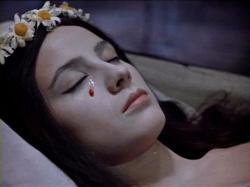
Viy
1967 -
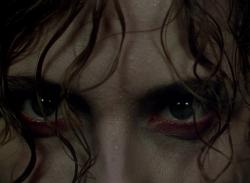
Black Narcissus
1947 -
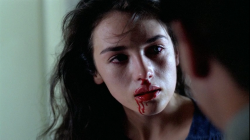
Possession
1981 -

Carrie
1976 -

The Devils
1971 -

The Sea Serpent
1984 -

The Dark Half
1993 -

The Baby
1972 -

Hellraiser
1987 -
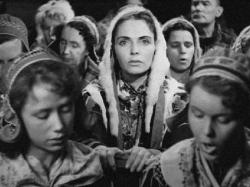
The White Reindeer
1952 -

The Serpent and the Rainbow
1988 -

Endless Descent
1989 -

Prom Night
1980 -

Night Train Murders
1975 -
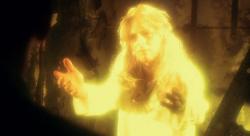
God Told Me To
1976 -

In a Child’s Name
1991 -
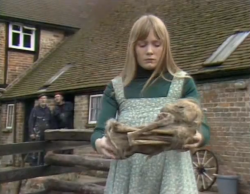
Beasts
1976 -

Prom Night II
1987 -

Men Behind the Sun
1986 -

DeepStar Six
1989 -

At Midnight I’ll Take Your Soul
1964 -

They Came Back
2004 -

Buried Alive
1990 -
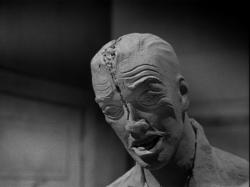
A Bucket of Blood
1959 -

Buffy the Vampire Slayer
1992 -
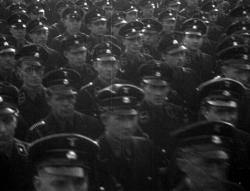
Night and Fog
1956 -

It Came From Beneath the Sea
1955 -
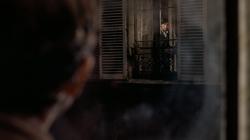
The Tenant
1976 -

Tokyo Gore Police
2008 -
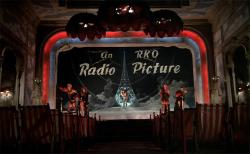
The Rocky Horror Picture Show
1975
We don’t do comments anymore, but you may contact us here or find us on Twitter or Facebook.



